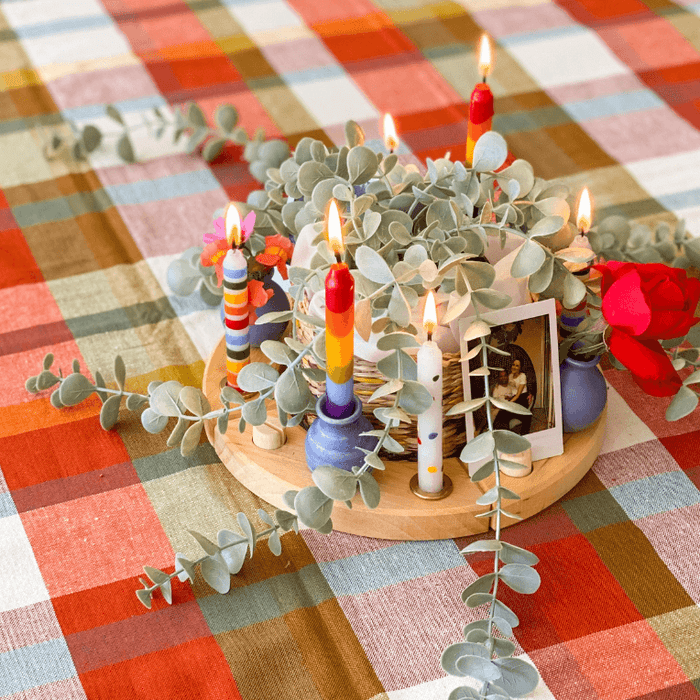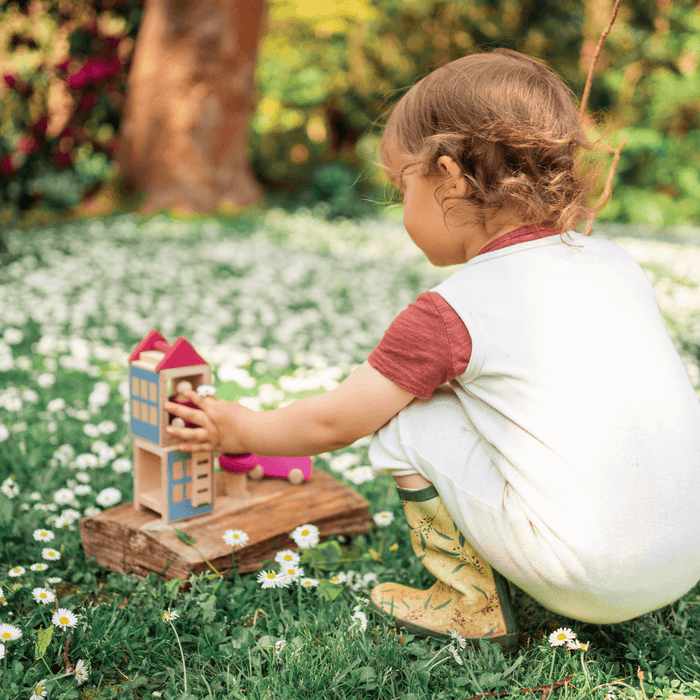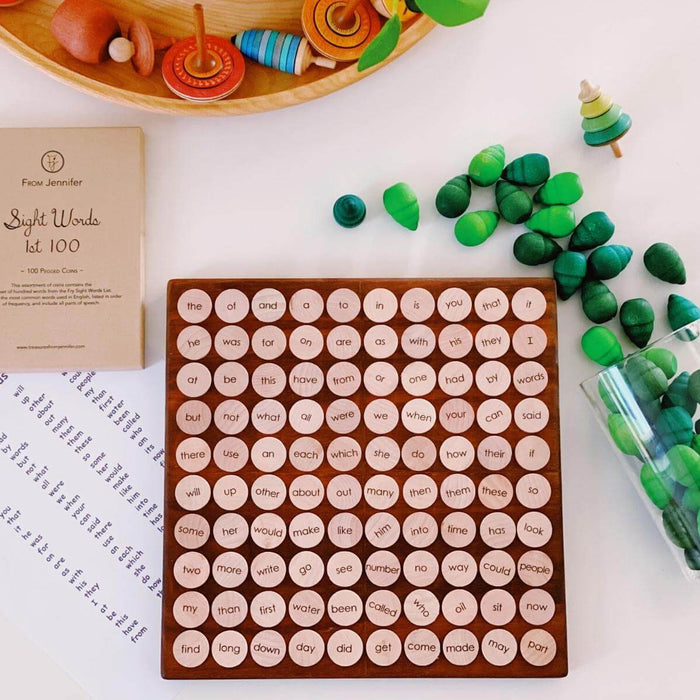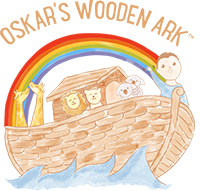

Kontu - Explore STEM education in a playful way
Our Kontu STEM Blocks have been a huge hit with children and parents around Australia. Ana from @worm.and.pip, her daughter Chloe and son Huxley have been exploring Kontu STEM Blocks over the last eight months. We have loved seeing all the creative ways Ana and her kids have used Kontu STEM blocks in their play and are thrilled to have Ana over to inspire you and show you how you can create fun learning activities with Kontu STEM Blocks at home.
The ins and outs of Kontu STEM Blocks
Many parents wish to be actively involved in their child’s early development and support learning in the home these days but sometimes it can be a struggle finding activities, ideas, or resources to help us do this.
Well, let me talk to you about Kontu STEM Blocks!
STEM is an approach to early learning and development that includes the areas of Science, Technology, Engineering and Mathematics. Kontu STEM Blocks have been created by an engineering father who was curious about how to support his own daughter’s early education in these areas. They are a system of magnetic wooden blocks that he developed to help children discover and understand early STEM concepts in a playful way and I’m so glad he decided to share them with the rest of the world.
The clever design of Kontu STEM Blocks encourages children across a wide range of ages and skill levels to playfully explore arithmetic, magnetism, spatial awareness, weight and counterbalance, joints and hinges, construction, and many other scientific concepts, while introducing them in such a unique way your children won’t even feel like they are learning. Even if your children aren’t actively seeking out science, engineering, or mathematics activities, Kontu Magnetic STEM Blocks teach these concepts, support the development of fine motor skills, bring out your child’s curious nature, and much more, just through play!
If you're interested in seeing Kontu STEM Blocks in action, check out our Kontu STEM Blocks video.
When I first came across images of Kontu STEM Blocks online I was super keen to get one of the kits for our own family. So, when they became available in Australia I jumped at the opportunity to procure a set knowing they would be a valuable, engaging, and popular open-ended resource for all our children (currently aged 9, 4, and 11 months), and they have been. In fact, this system has become so widely popular it has received a Parents’ Choice Awards Gold Award in the US and is a certified STEM.org Authenticated™ Educational Product.
Kontu STEM Blocks are made in Thailand from sustainably harvested rubber tree wood and rare earth magnets and are incredibly well made. When I first opened our kit, which was beautifully presented in a box using eco-friendly packaging, I had no worries about the children being able to get to the magnets out or our youngest choking on small parts, and was amazed at the quality.
What’s included in the Kontu STEM Blocks sets:
Kontu products are available in three different sizes.
- K10 – which includes 4 different sized trays and 10 bits
- K15 – which includes 5 different sized trays and 15 bits
- K25 – which includes 6 different sized trays and 25 bits
📸 by Ana @worm.and.pip (left, middle) and Jana @playroomstories (right)
Each kit also comes with a set of two-sided number and activity cards which can be used to help prompt children to explore STEM concepts through play. There is even a card holder to display the cards being used. The larger activity cards are a perfect place to start if you have a child who likes to follow instructions or feels most comfortable playing in a guided manner (like our 9 year old). Side A presents an overview of the STEM concept, while side B provides a suggested activity to try out. However, one of the best aspects of these kits is the flexibility of their design. Trays and bits can be arranged in a variety of ways designed by children themselves, not simply restricted to a limited number of configurations, which in turn encourages your child’s curiosity and creativity as they invent their own games and set up their own challenges.
Where learning meets play
If you have younger children (like our son Huxley who turns one this November), they will benefit just from exploring and playing with the bits. He will often roll the bits around on the ground or spend time joining two bits together and smiling at the “clack” sound they make when the magnets pull them together.
If your child is a little older (from the age of around three) they will enjoy engaging in a range of activities, both prompted and free play, while at the same time being exposed to STEM concepts like number recognition, 1:1 correspondence, construction, magnetism, weight and counterbalance to name a few.
My own background in Psychology and working with children has a strong influence on the way I introduce new or educational concepts to our children, and I often incorporate new learning experiences into activities our kids choose themselves or have shown an interest in. Here are some of the ways I have drawn on my children’s interests to create play-based activities with our Kontu STEM Blocks that you might also like to try.
Science is fun
Telling time
How often do you say to your children “5 more minutes” or “at x o’clock” knowing they actually have a limited understanding of how long this time period is? When our 4 year old daughter Chloe started to negotiate time periods with us (even though she understands the number sequence of 1-50 she would often respond with something like “no, 8 more minutes, no 3, I mean 10”) I decided she was probably ready to start learning how to tell the time.
This is a great activity to do with your child and can eventually be turned into a turn taking game with one person moving clock hands and the other guessing what time is being displayed.

📸 by Ana @worm.and.pip
To create our “Time Telling Game”, firstly, we set up the hands of our clock using the 3-tray and 4 tray, creating a joint between the two clock hands with one of the Kontu bits. To hold up the long hand (the 4-tray) we placed the 1-tray with its bit underneath the outer end. When constructing the clock hands, I recommend placing the long hand above the short hand so that it can move around without being blocked by the short hand in its travels. You can then create the clock numbers using other Kontu bits or using numbers written on paper or number counters as we have done. Take turns to move the clock hands around and have a discussion with your child about what time is being displayed.
I also recommend that when doing this activity for the first time you either leave the short hand in one position and move the long hand in increments of “five minutes”, or leave the long hand in one position and move the short hand to a new number (1 o’clock, 2 o’clock, 3 o’clock etc) however this of course depends on your child’s level of understanding and the learning outcome you have in mind. Once Chloe had grasped the concept of “o’clock” I began to introduce the concept of a quarter past, a quarter to, and half past. However, work at your child’s own rate of interest for the most rewarding experience.
Kitchen Scales
This activity works with the concept of weight and counterbalance and can be combined with creative play ideas such as cooking. It also incorporates odd and even numbers as children can explore the differences that occur when stacking bits on top of the scales one side at a time, or by adding an equal number of bits to each side of the scales at the same time.
This is a simple activity to set up and can be done by the child entirely by themselves. Simply prompt them to start by balancing the 5-tray on top of a 1-tray and Kontu bit. Once the 5-tray is balanced it’s time to get creative and start to play.
The Kontu block kitchen scales can be used to measure out “ingredients” for cooking (macaroons, sushi, or cakes anyone?). Consider the making of macaroons for example. You can set aside some play dough as a filling and discuss with your child how many “biscuits” (Kontu bits) are required to make a certain number of macaroons. Have them measure out the biscuits by adding Kontu bits to either end of the scales. Once the scales are evenly balanced you know you have the right amount of ingredients to get cooking.
It’s also great fun just to see what happens when you stack the scales high and even on both sides and challenge each other to take bits from each side in uneven proportions (“take 3 from this side and 5 from that side” for example). The look of “whoa” on our daughter’s face when we recently played this was priceless! We also got to enjoy pretending to eat macaroons and cake afterwards (Chloe also likes to use our Grimm's friends as candles on her cakes).
📸 by Ana @worm.and.pip
Technology is for everyone
Introduction to Coding
It’s inevitable that technology will be a large part of our children’s lives these days and I recently found myself wondering how I might introduce a few coding concepts to our daughter without downloading an app or actually turning on an electrical device.
Inspired by the idea of binary coding I decided to combine her love of reading and writing with a coding game using our Kontu 10-tray and Kontu bits.
This activity took a bit of preparation as I needed to take quite a lot of pictures to create the code breaking sheet and decided to come up with my own simple code rather than using the ASCII Binary Character Table.
Once prepared, this activity can be made as simple or as difficult as you desire. First, decide who is going to be the “code maker” and who will be the “code breaker”. The “code maker” then places bits into the 10-tray as per the code breaking sheet to represent a letter, the code breaker uses the code breaking sheet to determine which letter is being represented and writes it down on a piece of paper. Continue with this process until each letter of your secret word has been deciphered by the “code breaker”.
Depending on your child’s reading level, you can make the secret code as short (single words only – the child’s name for example) or as long as you like (using the code for a space to make sentences).
If you'd like to try this fun coding activity with your child, download your free copy here: Coding with Kontu STEM Blocks.
Become an engineer with Kontu STEM Blocks
Our daughter has a strong interest in pretend play or creating small worlds and can be found engaging in these types of activities daily.In our household we often use our set of Kontu STEM blocks for engineering type activities as part of small world creations or imaginative play and here are a few of the ways we have done this.

Making vehicles
This is a relatively simple play activity and one that can be quickly set up. It also encourages your child to use their imagination to create different designs and vehicles of different sizes, and the best thing about this activity is that you get to include your creations in imaginary play afterwards.
To create a vehicle simply join two Kontu bits together to make a wheel, then depending on the length of your vehicle repeat this again to make as many wheels as you require. Stack the Kontu trays on their sides atop the wheels so that the inward curves of the tray edge sit on the wheels at their centre.
Invite your child to explore what happens when they attempt to move the vehicles at different speeds or apply different amounts of pressure to the vehicles. Do the wheels move with the vehicle, or does the tray get pushed off the wheels? Perhaps the wheels themselves break apart?
Once you and your child have mastered the right amount of speed and pressure to ensure your vehicles stay intact while moving, set up a race track (we like to use our waytoplay roads) and see who can move their vehicle to the end of the track the fastest without it falling apart.
Build playground equipment for small worlds
Swing:
This construction may require some adult assistance depending on how well developed your child’s fine motor skills are.
Firstly, gather some string or ribbon and cut two pieces about 25cm in length. Tie these to the inward curves at the ends of your 5-tray and tie the other ends to the inward curves of the 3-tray ensuring the string/ribbon lengths are even. Once your 5-tray and 3-tray are connected by the string/ribbon, build two tall towers by stacking the Kontu bits as high as you can (I found a stack of about 10 or 11 bits for each tower was an ideal height). When your two towers have been created balance the 5-tray on top of the towers with the 3-tray hanging down between your towers. Now you have a swing with the perfect sized platform to place one of your Grimm's Friends, Grapat Nins, or other wooden peg dolls. Have fun testing out how high you can push your swing or create a competition to see how long your little people can stay on the swing.
Spinning see-saw:
Like the kitchen scales design above, create a spinning see-saw for your Grimms Friends, Grapat Nins, or wooden peg-dolls by balancing the 3-tray or 5-tray on top of the 1-tray and its bit. Place a couple of Friends, Nins, or wooden peg-dolls on each end and see how quickly you can spin the device, or simply manipulate it to create a see-saw action.
Climbing ropes:
This activity explores magnetism, helps develop fine motor skills, and teaches your child about patience and trial and error. Start by setting up two tall towers by stacking the Kontu bits and place one of the long trays (the 5-tray or 4-tray) on top with the magnetic dots facing down. Next grab a packet of paperclips and prompt your child to hook them together into a string to make the “ropes”. Because the paperclips are made from metal, they can be dangled from the bottom of the tray using the attraction of the magnets in the Kontu tray and will look like climbing ropes.
📸 by Ana @worm.and.pip
An invitation to count
Addition and subtraction using sing-along
Our daughter loves to sing and often comes home from preschool with a new rhyme she has learnt during the day. If your child has an interest in singing, you can draw on this to create a small world set up that encourages number recognition, 1:1 correspondence, addition, and subtraction while incorporating a little sing-along into your play session.
We recently created a frog pond using a counting/sand tray, a few loose parts, some frogs, and our Kontu STEM blocks (which we used as a log for the frogs to sit on), but you could put together almost anything for this activity (we’ve also created a more simplified version of monkeys in a tree and a crocodile using just out Kontu Kit).
Placing the frogs on our log, we sang the 5 Speckled Frogs Song:
“Five little speckled frogs,
Sat on a speckled log,
Eating some most delicious grubs, yum, yum”
“One jumped into the pool,
Where it was nice and cool,
Now there are four more speckled frogs, glub, glub”
As each frog jumped into the pond, we removed it from the log and into the sand tray. This activity introduces a fun visual aid for simple mathematical equations.
5 Cheeky Monkeys Song:
“Five cheeky monkeys swinging in a tree,
Teasing Mr. Crocodile ‘can’t catch me….can’t catch me’,
Along came Mr. Crocodile as quiet as can be,
Aaaaaaaand… snap!”
As the crocodile snaps each monkey remove it from the tree. Balancing a 5-tray on top of two bit towers helps ensure the tree doesn’t fall down when the monkeys are removed.
I hope this blog post has inspired you to draw on your own child’s interests and create some fun and engaging activities that will also support their STEM education.
Happy playing!
Ana
Thank you so much Ana for this amazing blog post and all your fantastic play ideas. We are excited to try them with our children. Follow Ana on Instagram @worm.and.pip for more creative and fun activities for children!
Oskar's Wooden Ark also offers a large range of loose parts and other toys which work really well in combination with Kontu STEM Blocks:
Grapat mandala pieces
Grimm's Friends or Grapat Nins, Brots, Palos, Magos
Grapat coins to count
Magnetic Tiles
Our Kontu STEM Blocks come in three different sets:
- Hello Kontu K10 – which includes 4 different sized trays and 10 bits
- Let's Go Bigger K15 – which includes 5 different sized trays and 15 bits
- Super Mega Awesome! K25 – which includes 6 different sized trays and 25 bits
Most Recent Blog Posts
-
 Get ready to elevate your holiday table decor to a whole new level of enchantment this festive season! In this blog post, we'll explore five captivating Christmas table centrepiece ideas that incorporate the timeless beauty of the Grimm's Celebration Ring.Read now
Get ready to elevate your holiday table decor to a whole new level of enchantment this festive season! In this blog post, we'll explore five captivating Christmas table centrepiece ideas that incorporate the timeless beauty of the Grimm's Celebration Ring.Read now -

The Ultimate Spring Activity Guide
Dust off those winter blues and step into the rejuvenating embrace of spring's splendour! Embrace the wonders of this enchanting season with our hand-picked selection of activities designed to delight, inspire, and leave you with cherished memories. Let the beauty of springtime spark your imagination, nourish your soul, and uplift your spirits as we celebrate the vibrant tapestry of nature's rebirth.Read now -

Home Learning with Treasures from Jennifer - Part 3: Literacy Activities
In our third and final instalment of the Home Learning with Treasures From Jennifer series, we discuss how you can use these resources to enhance your child’s understanding in literacy with a bunch of engaging activities for you try with your children at home.Read now







